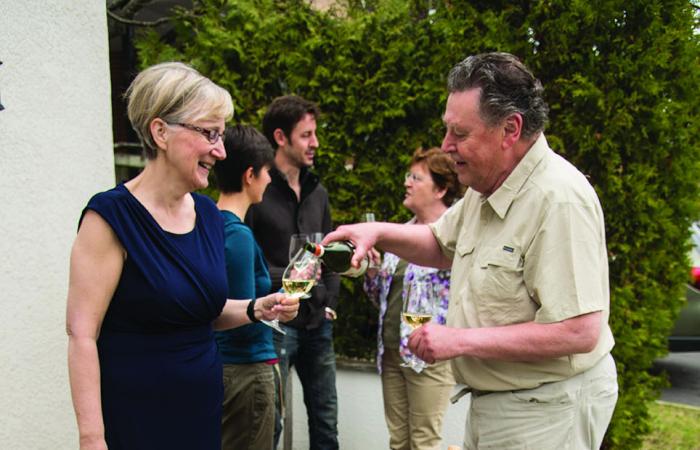Summer in Thunder Bay is short, precious and glorious. Our unique position at the western edge of one of the world’s widest time zones confers late evening sunsets painting the night skies right onto 10 pm, with yet another hour of gentle, lingering gloaming. We treasure these rare, memorable days, a brilliant counterpoise to our long dark winters, spending them on the patio or the deck, aboard the boat or on the dock. And for these long, languorous days, the wine of choice will usually be white.
White wines in warm summer, served well chilled, provide the light, refreshing lift the season demands. Often that wine may be Chardonnay (Bayview, Spring 2016). Now, there are reasons for Chardonnay’s enduring popularity, but always remember: the true joy of wine lies in its endless diversity of tastes, styles and origins. There may be one perfect martini, and you may have one preferred beer, but every wine is supposed to be different, under every cork a surprise discovery, a new sensory adventure, an opportunity to expand the range of life’s experience.
Probably the second most popular white wine grape, Sauvignon blanc gives wines I enjoy particularly with the freshness of spring; we looked at these in details last year (Bayview, Spring 2015). The third great international grape is Riesling, well deserving its own article; more about that later.
For leisurely summer sipping, Pinot Grigio has risen dramatically in popularity over the past decade. Originating from Italy, Pinot Grigio is always pleasant, never particularly characterful. A good Pinot Grigio should have no pretentions to greatness; when it tries, it inevitably falls short. So popular has it become that other wine regions have now adopted it; try one from Ontario, Oregon or New Zealand. Check carefully to ensure that it is labelled XD (extra-dry) on the LCBO’s dryness-sweetness scale. Some are marked D (dry); these retain a bit of sugar which detracts from their crisp definition, making them clumsy and mawkish. (A winemaker can mask any number of flaws with a little sweetness!) In Alsace they call their more dramatic style Pinot Gris. (Grigio is Italian for grey, that’s gris in French – same grape.) This is a perfect choice to accompany a buffet that includes poached or grilled salmon and home-made quiche.
Another grape worth seeking out is Semillon; under the right conditions it gives rich, full-flavoured wines. Often blended with other grapes to lighten its powerful richness, the best source may be Australia’s Hunter Valley, where wines are clearly labelled as Semillon, Semillon- Chardonnay or Semillon-Sauvignon blanc. France’s Bordeaux region makes similar wine, but winemakers there have lately been increasing the proportion of Sauvignon blanc in their wines, and their labels don’t always tell you that, so research carefully if you want the true Bordeaux Semillon experience.
The range of wines and grapes in this category is fascinatingly broad and international. Most need no ageing, so don’t hesitate to experiment; here are some suggestions to begin your search: luscious, exotic Viognier, expensive from its home in Condrieu, France, but a bargain from Australia or Languedoc; spritely Aligoté – Burgundy’s other grape, now also from Niagara; or citrusy Picpoul de Pinet from south-west France, are perfect with seafood. Gavi (best is labelled Gavi di Gavi) and Verdicchio (best is Castelli di Jesi), both from Italy, or lively Grüner Veltliner from Austria, are just right for patio luncheons. Remember, in Europe the name of the wine often may not include the name of the grape, so Entre-Deux-Mers and Muscadet de Sèvre et Maine (best is Sur Lie) are the names of wines, and do not identify their grapes.


